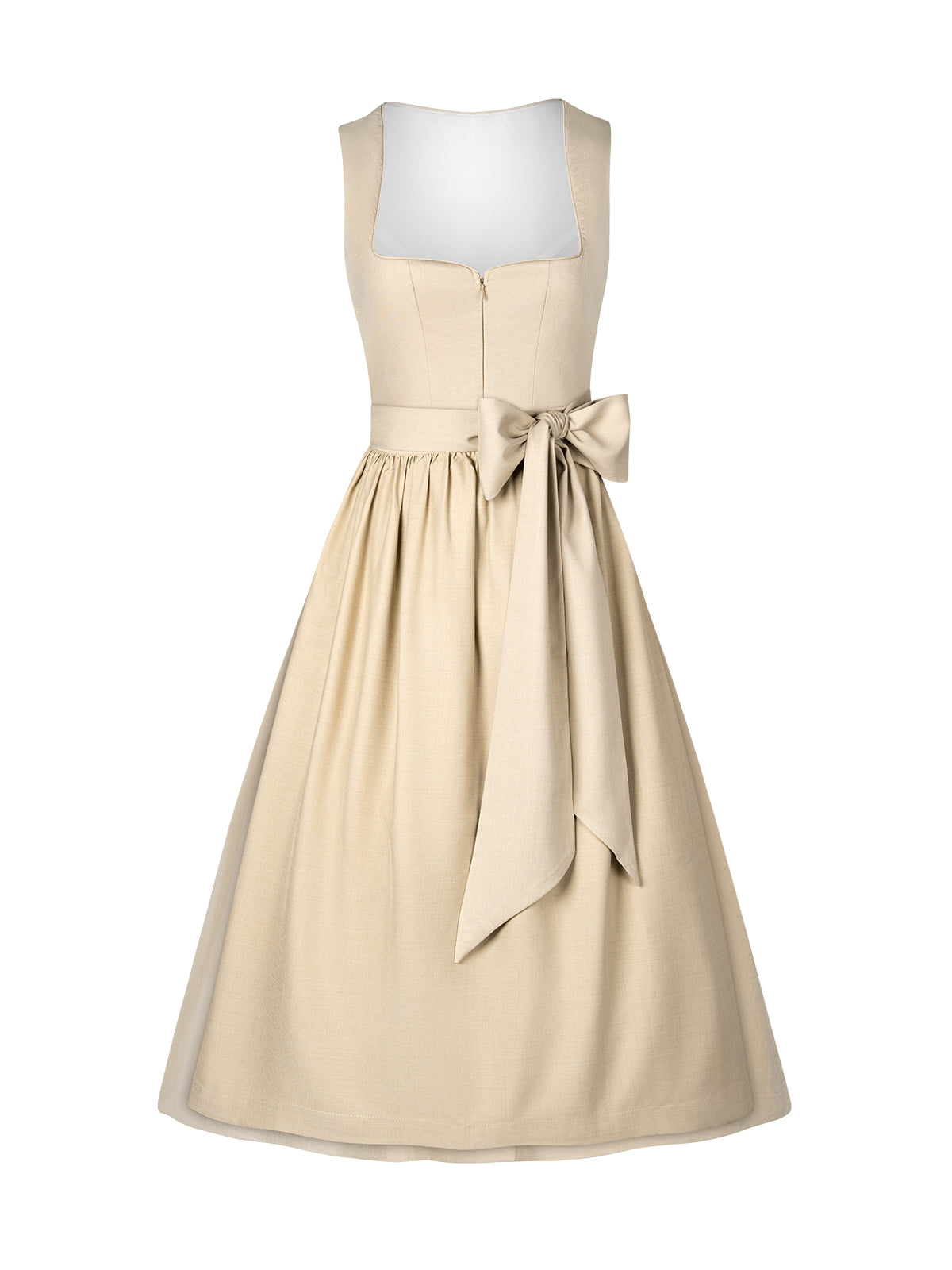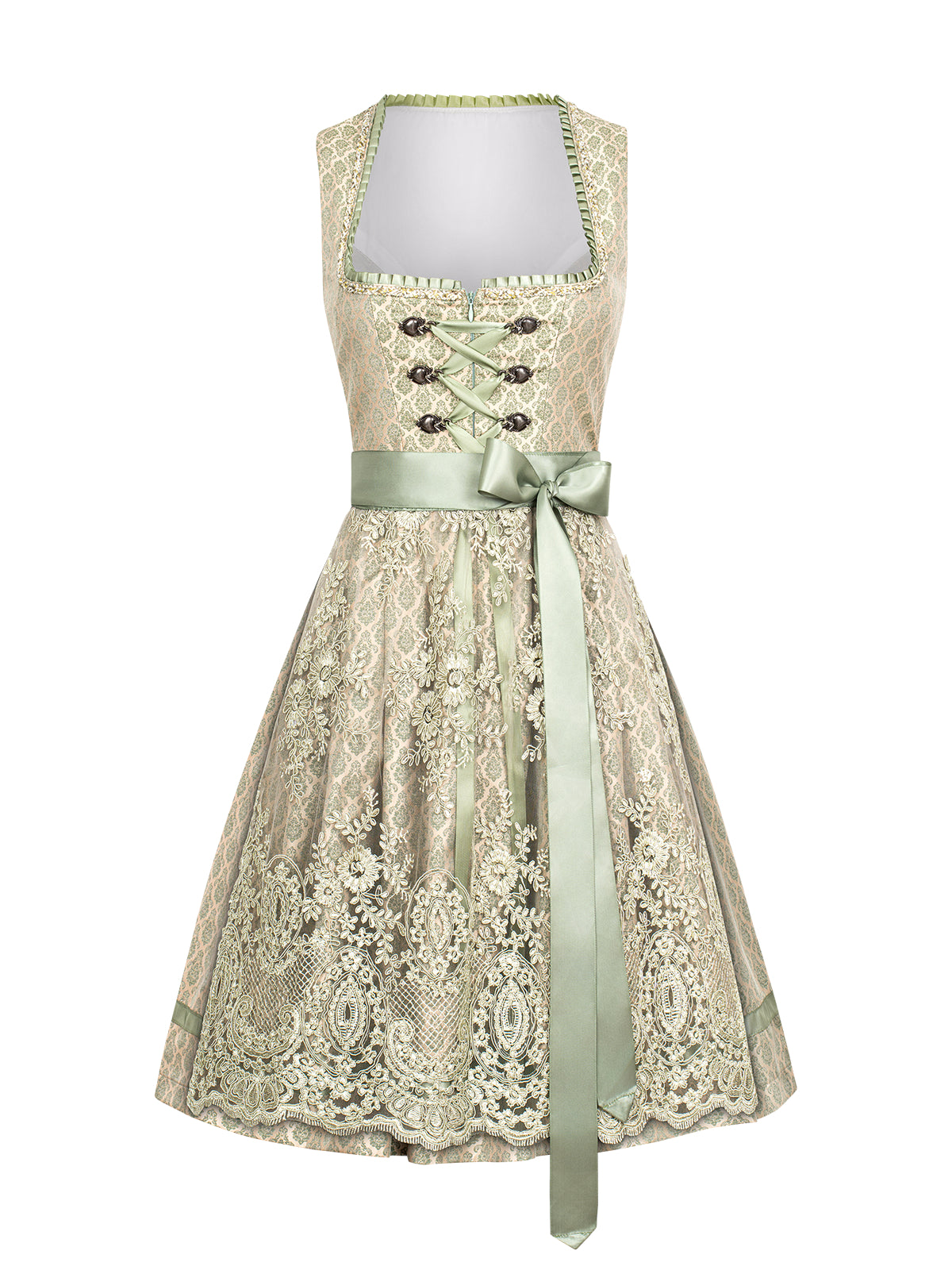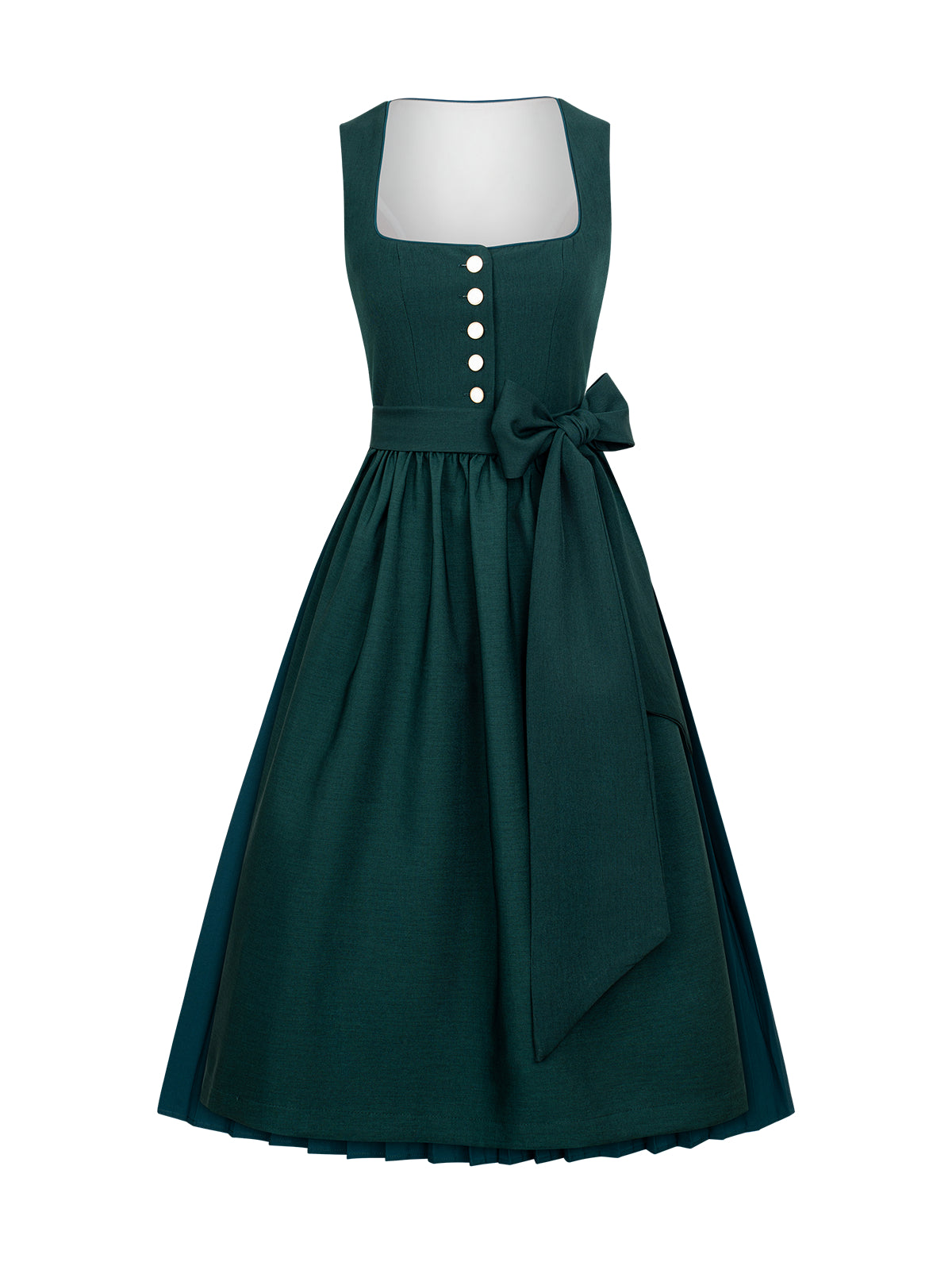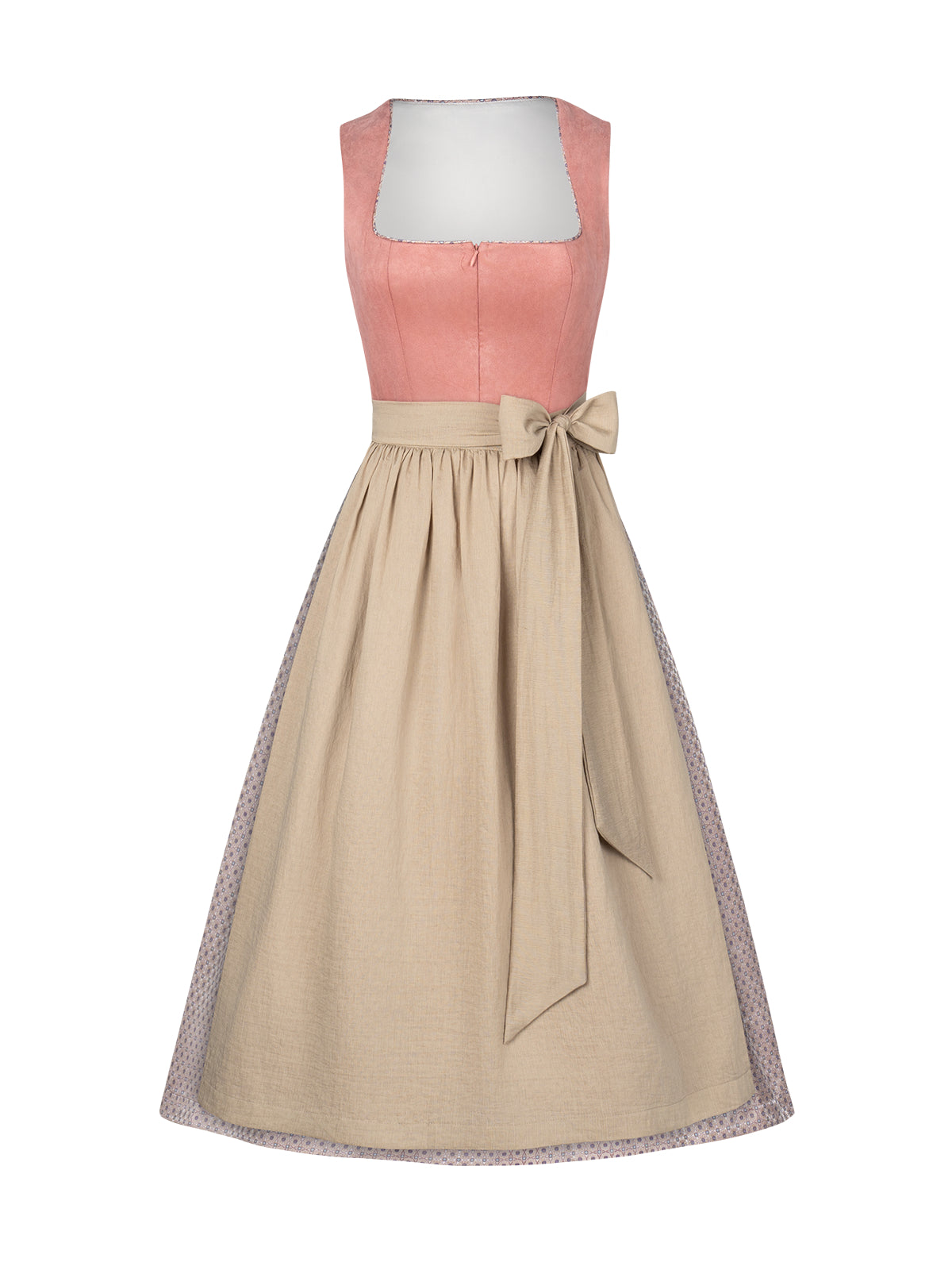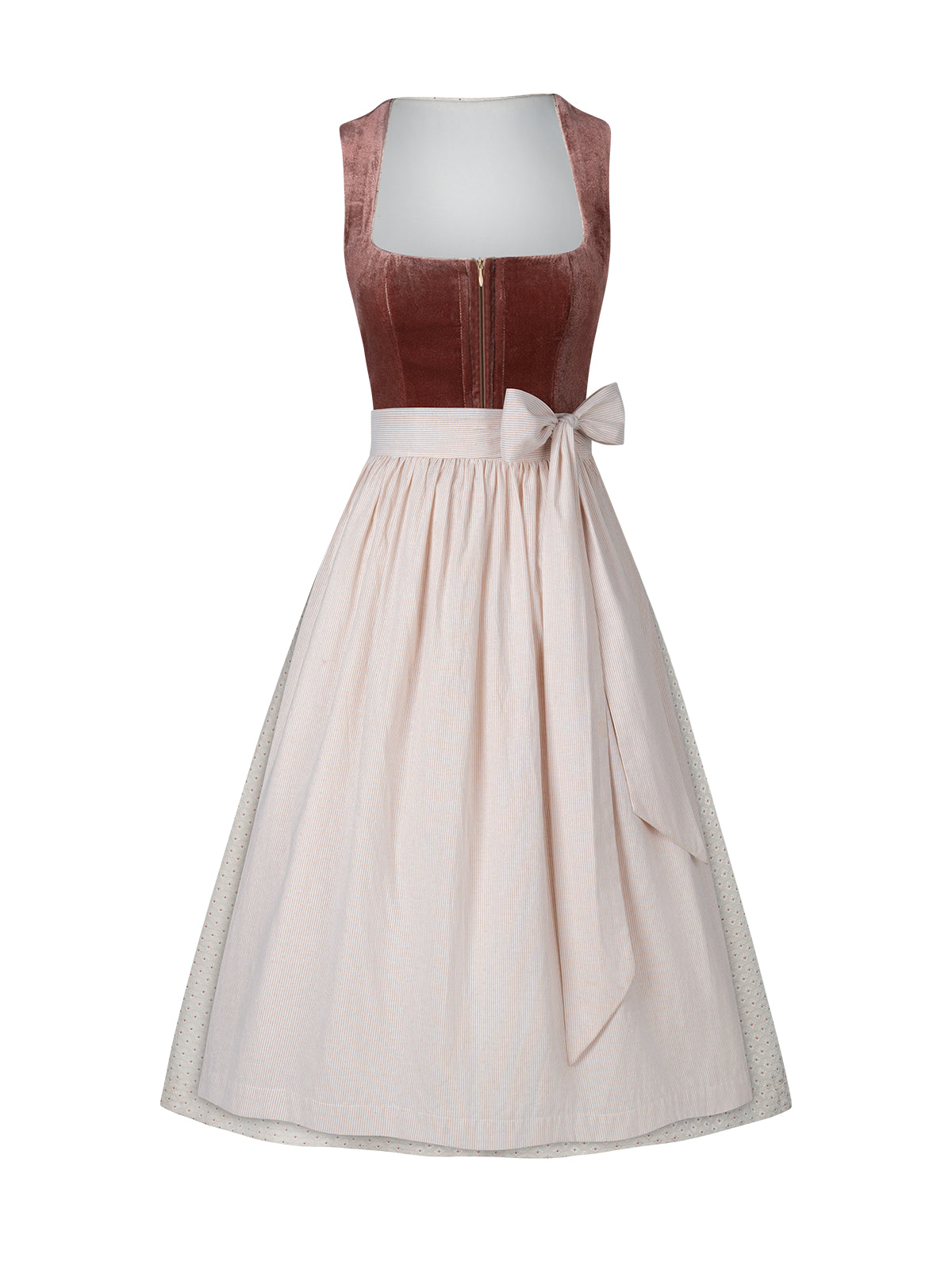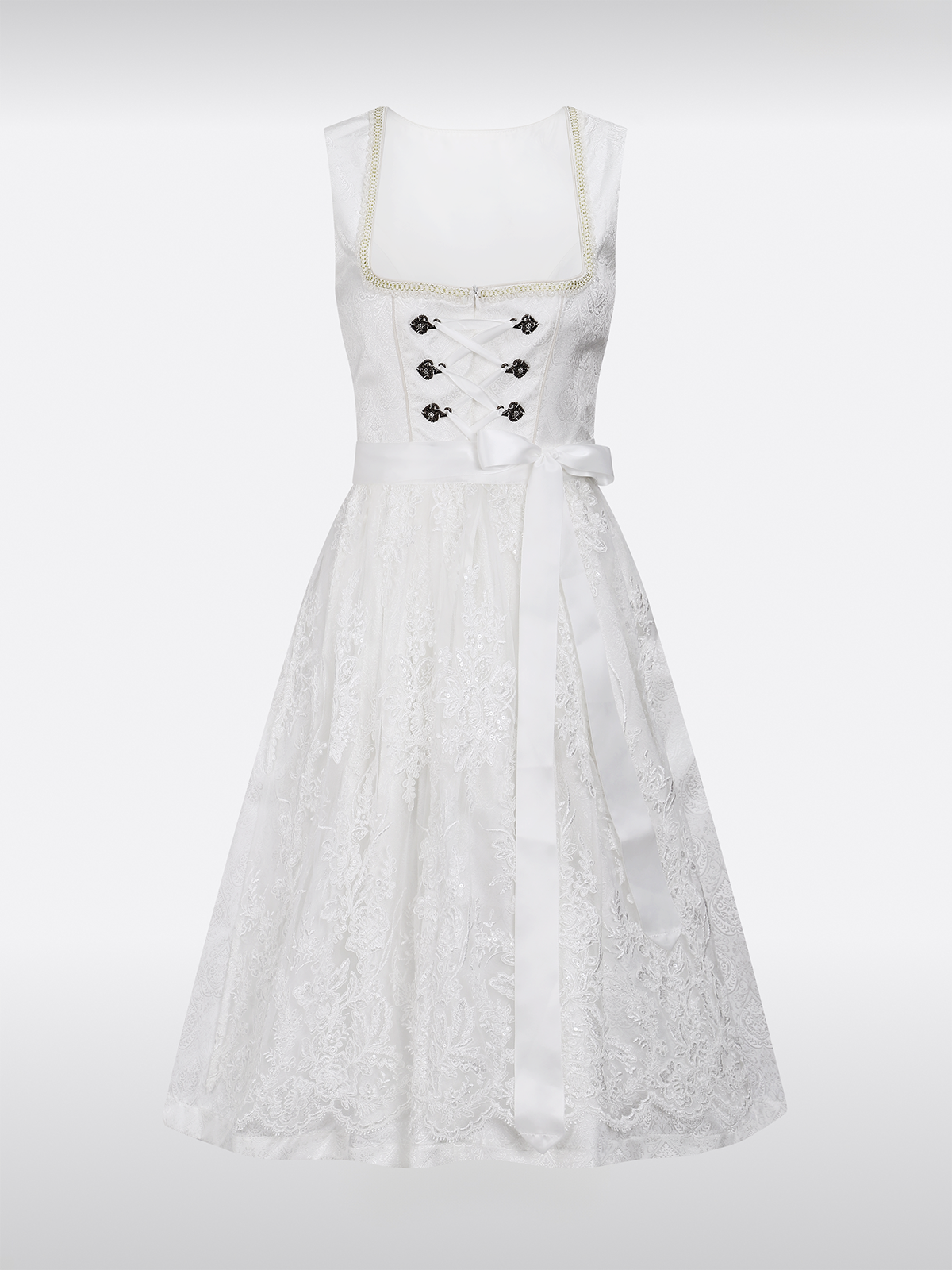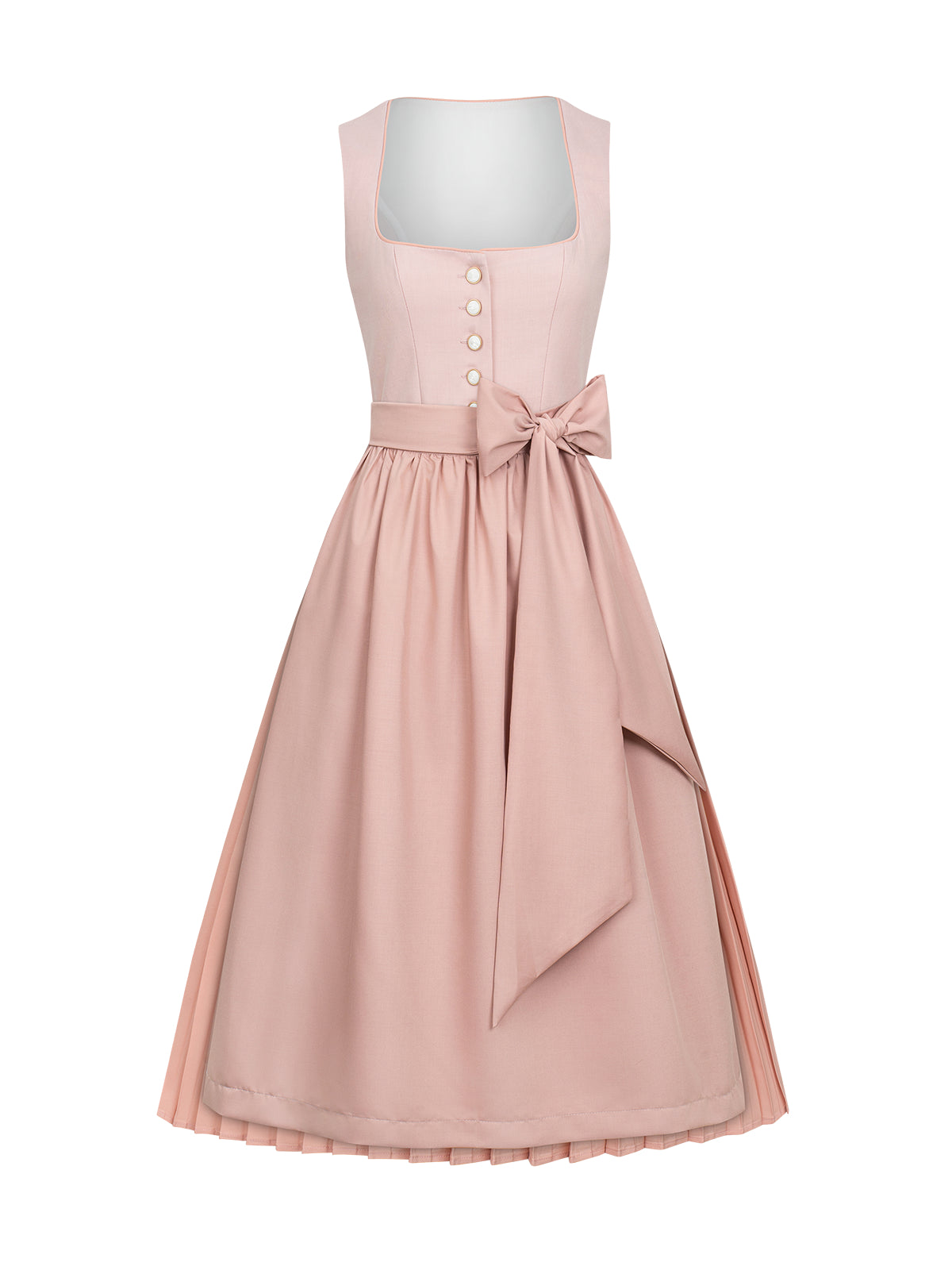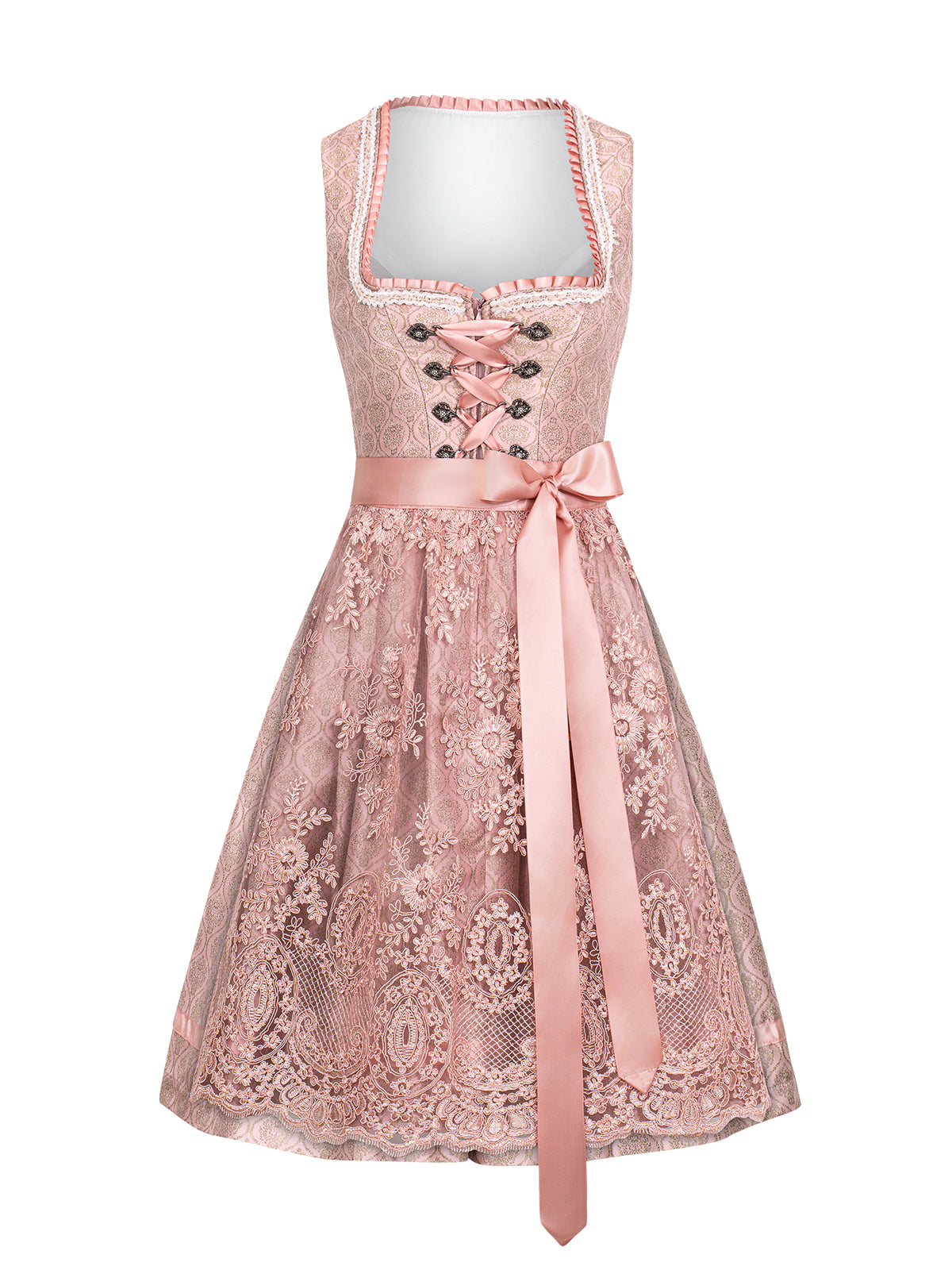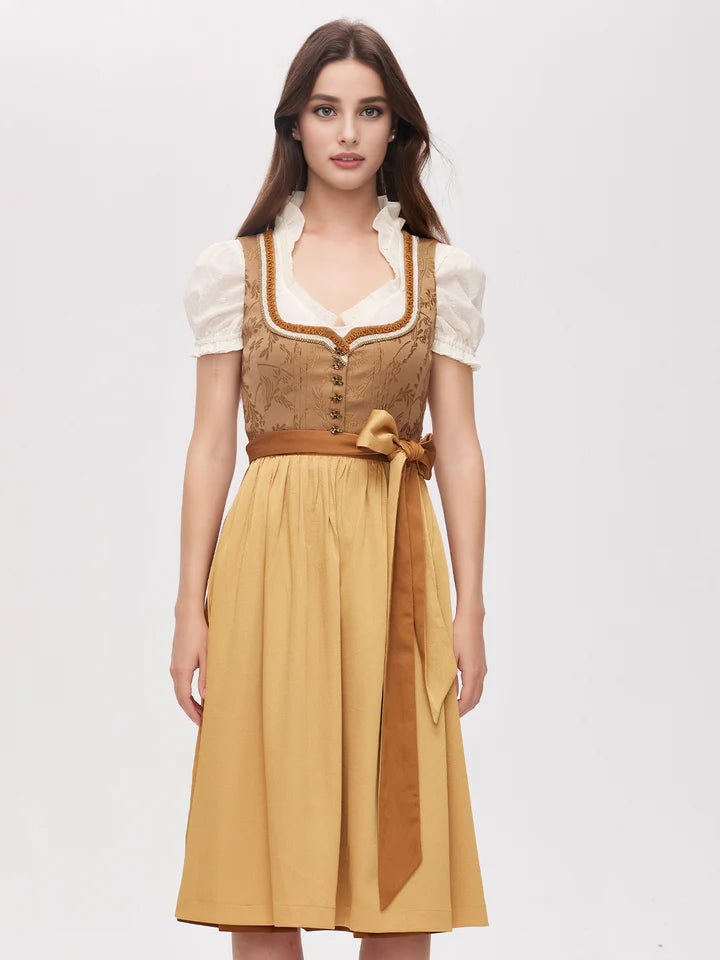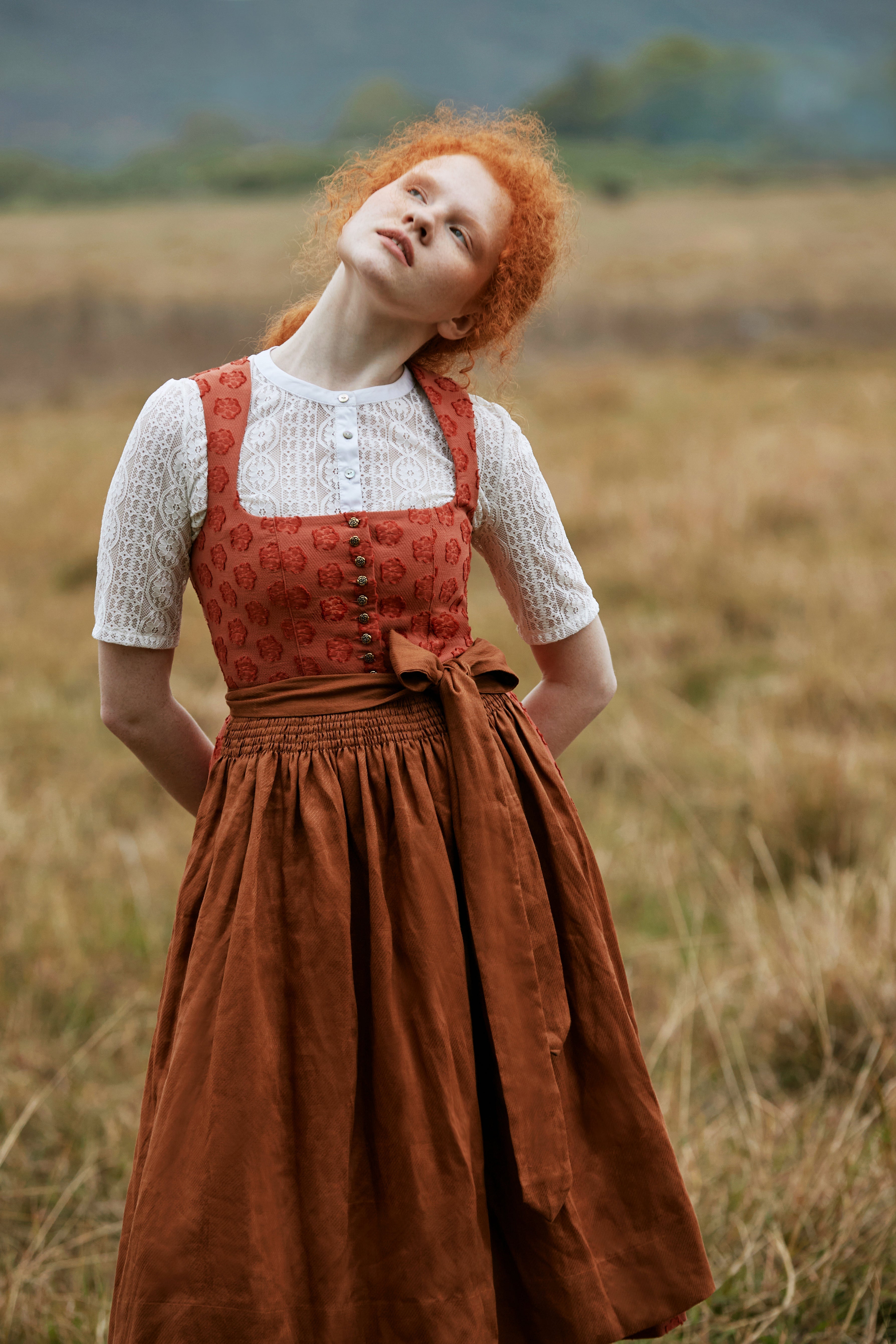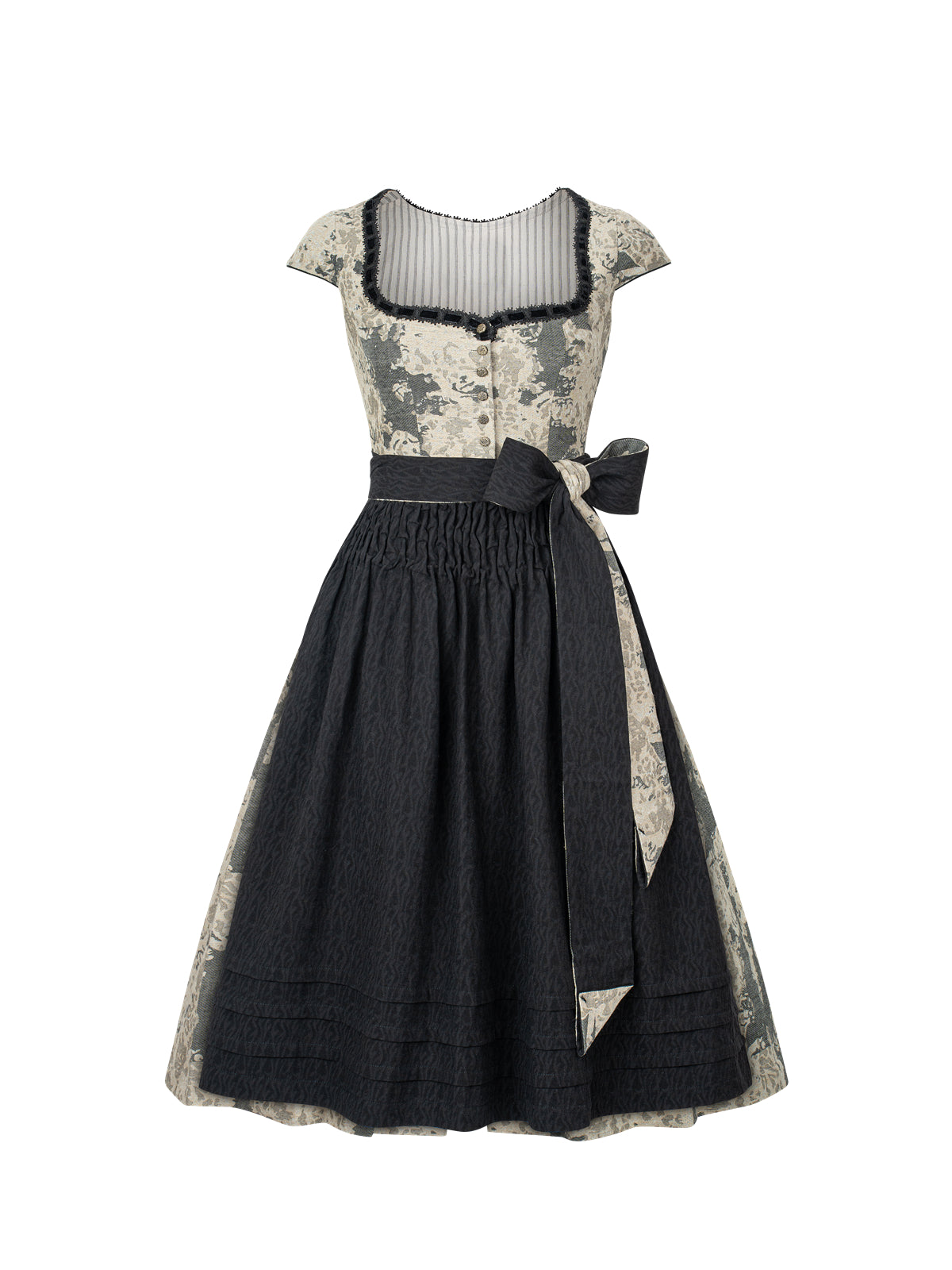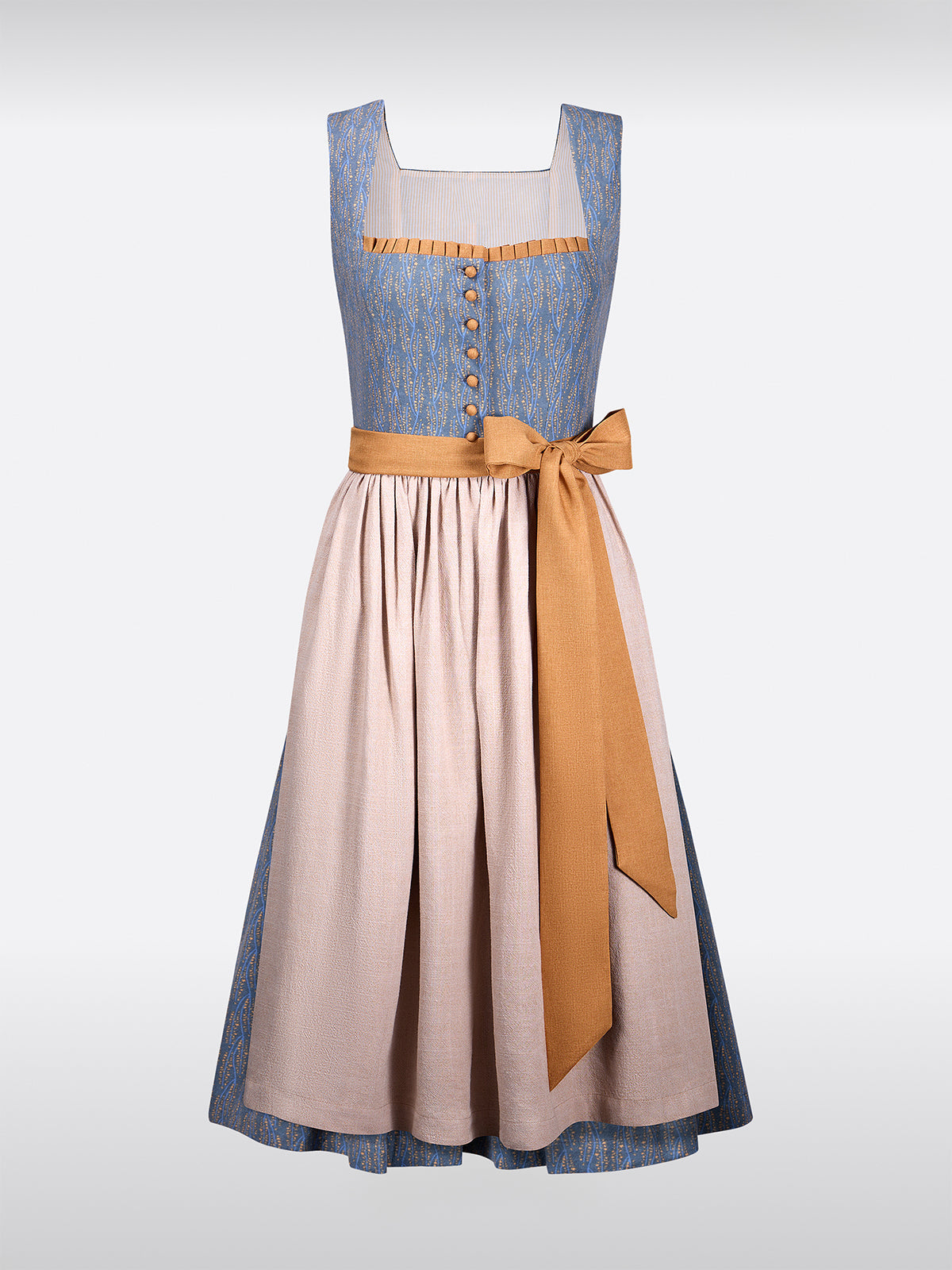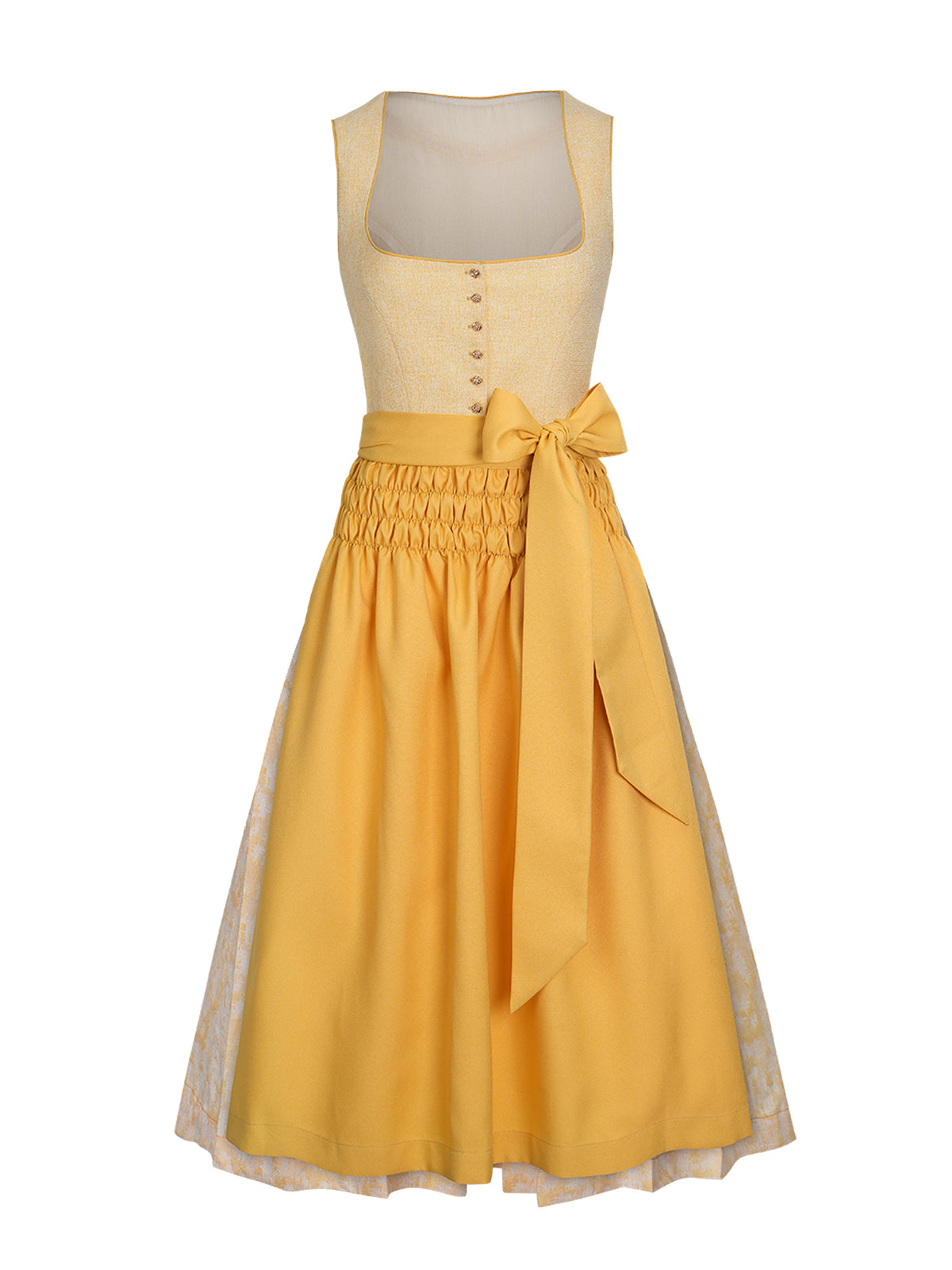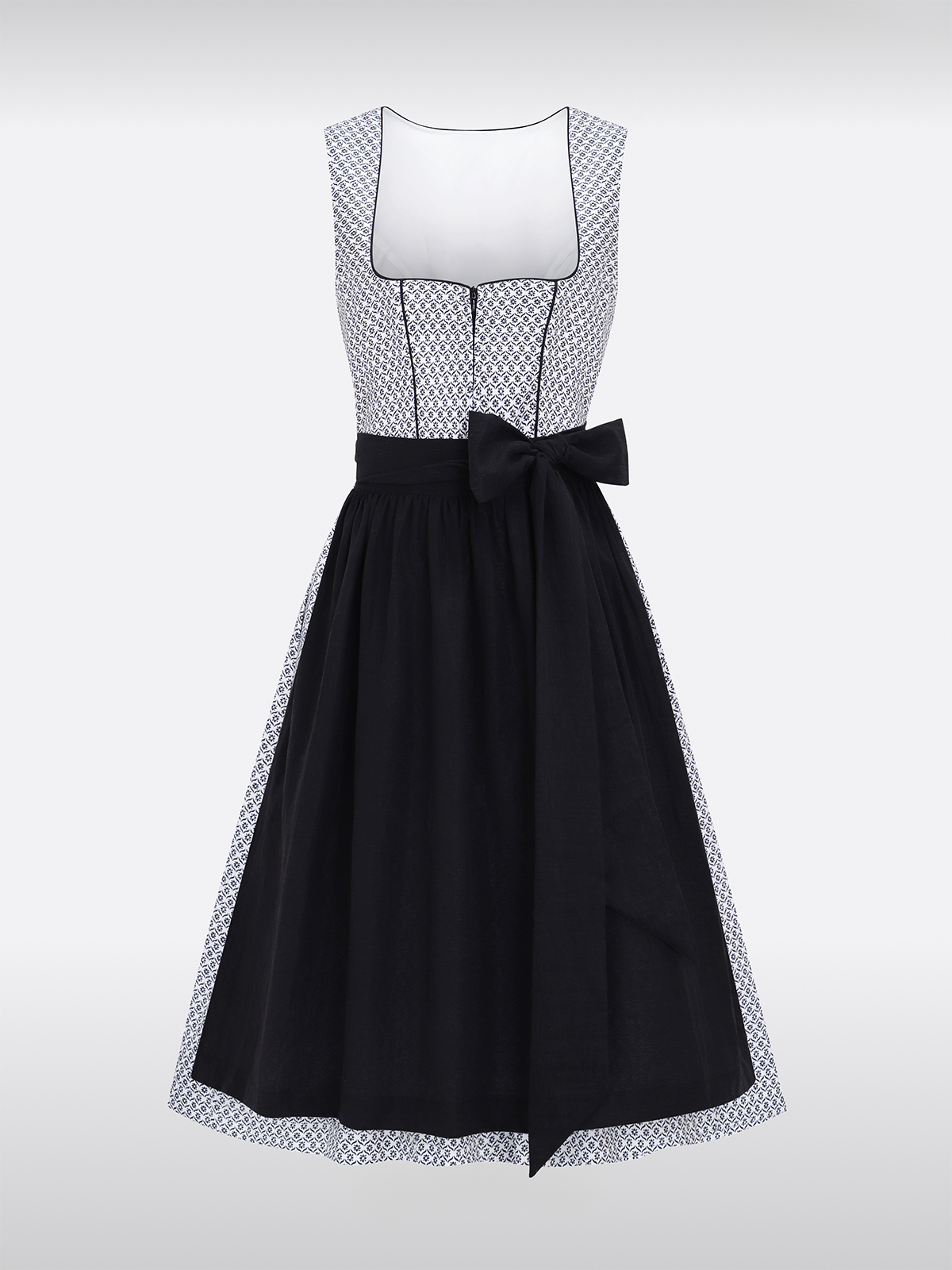The yellow dirndl is a vibrant and cheerful choice in the world of traditional costume. Yellow radiates warmth and energy, lending any outfit a sunny, positive touch. Women who choose a yellow dirndl want to make a fashion statement and demonstrate their boldness with color. Such a dirndl immediately attracts attention at folk festivals and other festive occasions and leaves a lasting impression.
But what makes the yellow dirndl so special? The color yellow symbolizes joie de vivre and optimism and is ideal for events where good humor is paramount.
Dirndl yellow can be wonderfully combined with a simple white blouse and subtle accessories to further emphasize the cheerful effect of the color.
Choosing a yellow dirndl often involves a deeper decision. It's more than just a color choice—it's a conscious decision to express joy and lightness. Women who choose this color often express their positive attitude toward life and their desire to explore new paths. Yellow represents freedom and openness and lends the dirndl a modern, fresh character.
Dirndl plain: simplicity with styleA plain dirndl is the ideal choice for anyone seeking an elegant and understated dirndl that still retains its appeal. In a world where traditional costumes are often associated with bright colors and patterns, the plain dirndl stands out as a symbol of minimalism and timeless elegance. Women who choose a plain dirndl appreciate the clean, understated style that still leaves a lasting impression.
A
Dirndl plain can shine in a variety of colors – from classic black and navy blue to soft tones like pastel pink or beige. Each color brings its own statement and impact, giving the wearer room to express their personal style. A dirndl like this is like a blank canvas that can be personalized through the choice of blouse, accessories, and hairstyle.
But even the decision to wear a plain dirndl often has a story behind it. Women who choose a plain version may be consciously looking for a way to express their personality without the distraction of patterns or color combinations. It's a subtle yet powerful statement that exudes both self-confidence and style.
Dirndl lilac: soft and feminineThe lilac dirndl is the perfect choice for women who prefer a romantic and gentle aura. The color lilac conveys calm, serenity, and a delicate femininity that translates perfectly into traditional costumes. A lilac dirndl is ideal for spring and summer festivals, where light, pastel colors are particularly effective.
Lilac is a color that not only appeals visually but also exudes a sense of calm and harmony. Women who choose a lilac dirndl often emphasize their feminine and romantic side. Combined with a delicate lace blouse or intricate accessories, the result is a look that is both traditional and modern, perfect for special occasions.
A lilac dirndl also has a special symbolism: It represents hope and a positive attitude toward life. This color appeals to women who prefer a gentle yet expressive presence and demonstrates that choosing a dirndl can have not only fashionable but also emotional value.
An Unexpected Turning Point: When Fashion Becomes a Challenge
During a joyful celebration at a folk festival, the wearer of the yellow dirndl experiences a surprising moment. Amidst the crowd, she notices someone who reminds her of a past relationship. Suddenly, her feeling of joy and lightness gives way to a surge of uncertainty and restlessness. Her cheerful, sunny dirndl, which until just a moment ago embodied her good mood, suddenly feels heavy and inappropriate.
This unexpected encounter triggers an inner conflict: Should she enjoy the festive atmosphere or face the past? Her yellow dirndl, which she had chosen so carelessly and joyfully, suddenly no longer seems to fit. She feels the eyes of others directed at her and wonders if her fake cheerfulness is visible. This moment of confrontation leads to a chain reaction – she rethinks her decisions and the reasons why she chose this particular dirndl.
In contrast, a friend in a lilac dirndl observes the events from afar. She knows the story and understands the emotions her friend is going through, and feels an inner conflict. Should she approach her and offer comfort or give her the space to process the situation on her own? Her lilac dirndl reflects her calm, thoughtful nature, but within her, too, a quiet uncertainty simmers about how to react.
Emotional Depth: When Fashion Tells Personal StoriesBehind every dirndl lies more than just a fashion statement—it also tells personal stories and emotions. The plain dirndl, for example, appears simple and understated on the outside, but for the wearer, it's a conscious choice. Perhaps she wears it to express her inner peace and balance, even if, in moments like these, she suddenly feels overwhelmed by a wave of insecurity.
The woman in the yellow dirndl deliberately chose her dress to express her joyful side. But now, confronted with her past, she realizes that she may have used this shell as a protective shield. The yellow dirndl suddenly feels like a garment that doesn't match her current emotional state, and this inner conflict intensifies.
The wearer of the
lilac dirndls On the other hand, she is aware that her choice symbolizes calm and harmony. She deliberately chose this color to express her calm and thoughtful nature. However, a little uncertainty also arises within her, as she wants to help her friend while simultaneously maintaining her own reserve.
Chain reactions and the interplay of emotionsThis unexpected turning point at the festival triggers a series of reactions and new insights. The woman in the yellow dirndl feels that she must confront the past to regain her inner peace. The encounter reminds her that she can only be truly free and carefree if she resolves the conflict within herself.
At the same time, the wearer of the lilac dirndl is moved by the events to reflect on her role as a friend. She realizes that her level-headed nature is not always enough to support her loved ones in difficult moments and decides to approach her friend more openly and offer her support, even if this means abandoning her own reserve.
The third woman's monochrome dirndl symbolizes the simplicity and clarity she strives for, but at this moment she too feels questions and uncertainties arising in her own emotional world.The sight of the two women and their inner struggles makes them reflect on their own values and goals.
Conclusion: Dirndl in yellow, lilac or plain – fashion as an expression of personality and emotionEvery dirndl, whether yellow, lilac, or plain, is more than just a garment—it reflects the wearer's personality and emotional world. The colors, cuts, and conscious choice of how the dirndl is worn tell stories that are deeply connected to the women's feelings and experiences.
The yellow dirndl represents joie de vivre and optimism, which can, however, change in moments of doubt. The lilac dirndl symbolizes calm and composure, which are put to the test in moments of uncertainty. And the plain dirndl represents clarity and simplicity, which can be shaken by external influences.

